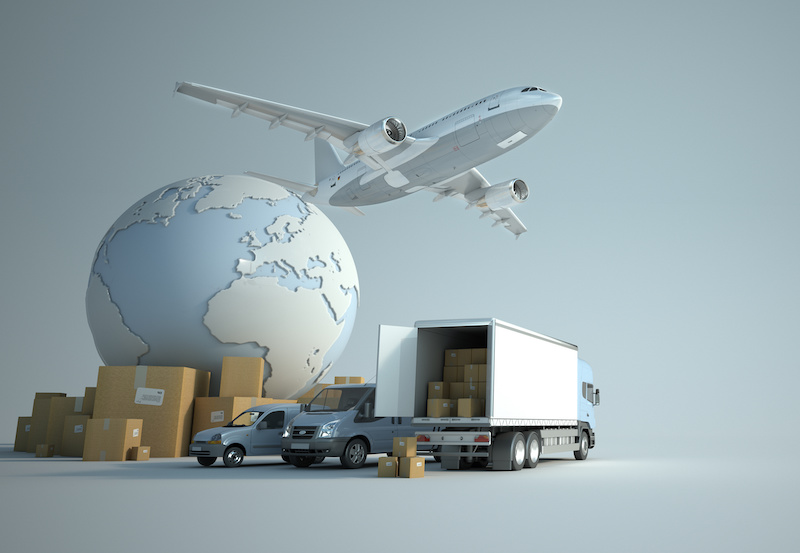3 Things to Know When Transporting Your Robot
We’re now on the pace of mechanical and AI technology advancement and development. A time when people use the help of a robot for a particular task.
Robots are now in demand for health care, agriculture, food preparation, manufacturing industries, and the military. There are even robotic pets now for common households.
Subsequent Factors To Consider Before Transporting Robots
Most robots are considered heavy equipment with sensitive components, and transporting them from one place to another could be a vital task to hold out. In this case, finding the right trucking and freight company is essential for this task.
1. Know the Mode of Transportation That Works Best for You

There are three basic transport methods for robots: land, air, and sea transport.
Land Transport: It could be a common means of transport for your robots. You’ll sometimes get a partial truck where you’re given a specific volume. Otherwise, you can get a whole truck where the complete truck is devoted to your payload after deciding to ship something by truck; pickup trailer, tow truck, panel truck or box truck, flatbed, and lowboy are options.
Within each of those types, there are different lengths of trucks that you can request. You ought to remember that truck drivers usually want to examine the masses to ensure they’re secure. With a wide variety of trucks, the driver will be the one that secures the load and not you once you have a truck come to your place. You ought to learn beforehand how long the truck is. Make sure it’ll be ready to get in and find out about your area.
Air Transport: If you need to transport anything quickly, flying is a great option. When you have to go across oceans, this may be much truer. The drawback is that this is frequently also pricey. A large robot will also be expensive to transport on an aircraft with all of its accessories.
Additionally, there are limitations on what you can load onto the airplane. The airline carrying your belongings may decline if you have a gas or petroleum-powered robot. Using lithium batteries will also make exporting them nearly hard. It’s difficult to get a lot of robot gear onto a C-130.
Sea Transport: When moving your robot across oceans or over significant distances around a coast, shipping by sea is typically a pleasant experience. It’ll require a lot of time, which is a disadvantage. It’s also easy to pack a shipping container for delivery. You’ll be able to transfer your lithium batteries across oceans using this method, which is a huge advantage. Typically, this feature is less expensive than by land or by air.
You’ll frequently require several shipping providers. You might, for instance, have a local truck to the port, a truck from the ship or boat business to the destination port to the city center, or another, smaller vehicle to your location. Service providers like Titan WorldWide Logistics can facilitate and arrange all of that.
2. Know and Communicate with Your Shipper
Like any good relationship, getting the most important from your shipment partner depends on communication. The shipper should learn of the specs and sensitive features to be protected. Robot arms may have to be secured in a particular fashion. Lasers may require temperature control.
Imaging devices could also be susceptible to shock or vibration. Make sure to convey the unique qualities of your product and find comfort with the solutions offered to handle these needs. Practicing and observing basic precautions in handling shipments is a standard procedure. But special instruction is a plus when it involves loading and unloading the parcel.
3. Know How to Secure Your Package to Ensure Safe Transit
Select a Crate Fitted to Your Package: be adaptable and creative when developing the best package layout feasible to ensure its safe transit. Instead of trying to make the box fit, invest in using a sturdy material. A crate can be used as a reliable load transfer method as well.
When shipping goods, a crate can make all the difference. A crate should typically be elevated by several blocks so that a pallet jack (or forklift) may lift it from any angle. Usually, individuals will use some slats to construct a container with a single opening for forks.
Proper Labeling: new crates also tend to distort, so label the container on all sides with your address, contact information, the destination, “THIS SIDE UP”, and “FRAGILE”. To identify which side wall of the box relates to the other side walls, mark its base or lid. Placing a letter on each touching side can be helpful and may help with reassembly.
Other people handling the crate may be able to place it for you if you indicate which side is “FRONT”, and unloading may be made easier if your robot can drive on and off the crate. You may also think about spray-painting your information on the crate to make it permanent and stapling your labels to make sure they stay in place.
Takeaway
Transporting a robot isn’t as easy as transporting a regular package. You need to know certain things to make the transport successful. This article should have provided you with a general overview of the information you need to know before moving your robot.

